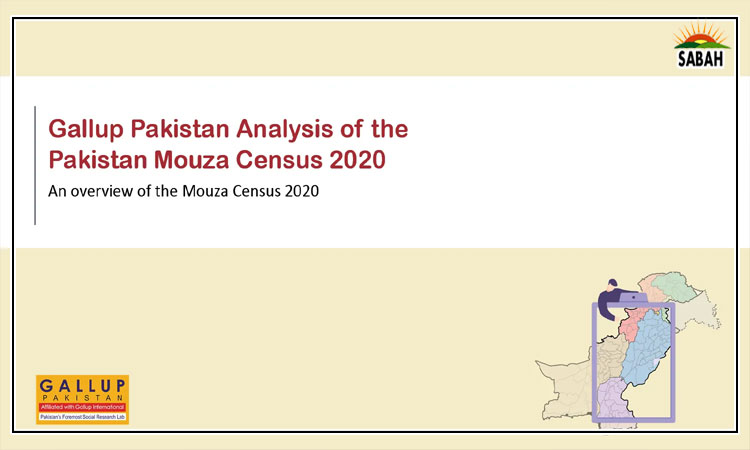Over one-third (35%) of the mouzas in Pakistan reported growing vegetables in 2020: Gallup Pakistan
ISLAMABAD, Oct 02 (SABAH): A recent comprehensive analysis conducted by Gallup Pakistan on the “Pakistan Mouza Census of 2020” by the Agricultural Census Wing, of the Pakistan Bureau of Statistics (PBS) provides key insights into socio-economic conditions, land use, and facilities available in rural areas across Pakistan. The Mouza Census 2020 marks the 50th anniversary of the first Mouza Census conducted in 1971, with the slogan “Data for Development.” This significant exercise is an essential step in updating rural statistics and ensuring better land administration, development planning, and evidence-based policymaking.
This press release gives details the cultivation of other crops: pulses, orchard (fruits), and vegetables across mauzas in Pakistan. For each type of crop we delve into the provincial spread, sources of irrigation used to cultivate them, and proportion of these mouzas that have been impacted by natural disasters.
Key Findings:
Out of the 51,809 mouzas surveyed in the 2020 census, 8% reported growing Pulses, 22% reported having Orchards (Fruits), and 35% reported growing Vegetables.
Across provinces/regions: Proportionally vegetables, orchards and pulses were most abundantly grown across mouzas in Gilgit Baltistan, with 81%, 43% and 11% mouzas across the region reporting as such, respectively.
– Punjab: 9% mouzas grew pulses, 23% had orchards, and 35% grew vegetables
– Sindh: 9% mouzas grew pulses, 26% had orchards, and 31% grew vegetables
– Khyber Pakhtunkhwa: 4% mouzas grew pulses, 18% had orchards, and 32% grew vegetables
– Balochistan: 10% mouzas grew pulses, 22% had orchards, and 36% grew vegetables
– Islamabad: 7% mouzas grew pulses, 2% had orchards, and 3% grew vegetables
– Gilgit Baltistan: 11% mouzas grew pulses, 43% had orchards, and 81% grew vegetables
– Azad Jammu & Kashmir: 10% mouzas grew pulses, 8% had orchards, and 37% grew vegetables
Sources of irrigation:
– Pulses: Tubewells (54%) were the most common sources of irrigation for mouzas growing pulses.
– Orchard: Canal irrigation (66%) was the most common sources of irrigation for mouzas with orchards.
– Vegetables: Tubewells (62%) were the most common sources of irrigation for mouzas growing pulses.
Natural Disasters: 31% of pulses growing mouzas, 25% of vegetable growing mouzas, and 22% of mouzas with orchards, reported having faced natural disasters in the past 5 years in 2020.
– Drought: A concerning 23% of pulse growing mouzas reported being affected by droughts, with the proportion being 12% and 11% for vegetables and orchards, respectively.
– Flood: 9% of vegetable growing mouzas reported having been affected by floods, while 7% of those growing pulses, and having orchards did so.
– Earthquakes: 5% of vegetable growing mouzas reported having been affected by earthquakes, with the proportion being 4% and 2% for those with orchards and growing pulses, respectively.
Rojah Sheikh, Assistant Manager Research at Gallup Pakistan says, “Deep diving into the Mouza Census 2020 data offers substantial benefits for Pakistan by providing a detailed understanding of rural socio-economic conditions. This granular data enables policymakers to identify gaps in services such as healthcare, education, and agricultural support, allowing for targeted interventions that directly improve rural livelihoods. It also informs better planning in the agricultural sector by highlighting the availability of resources like seeds, fertilizers, and irrigation, helping to boost productivity and food security. Using this data, we can guide infrastructure development by pinpointing areas lacking essential services such as electricity, roads, and communication networks, ensuring more equitable development across the country. By offering evidence-based insights, this census enables the fair allocation of government resources, ensuring that underserved regions receive the support they need. Overall, deep diving into this data fosters more effective, sustainable, and inclusive development, improving the quality of life in rural communities.”












